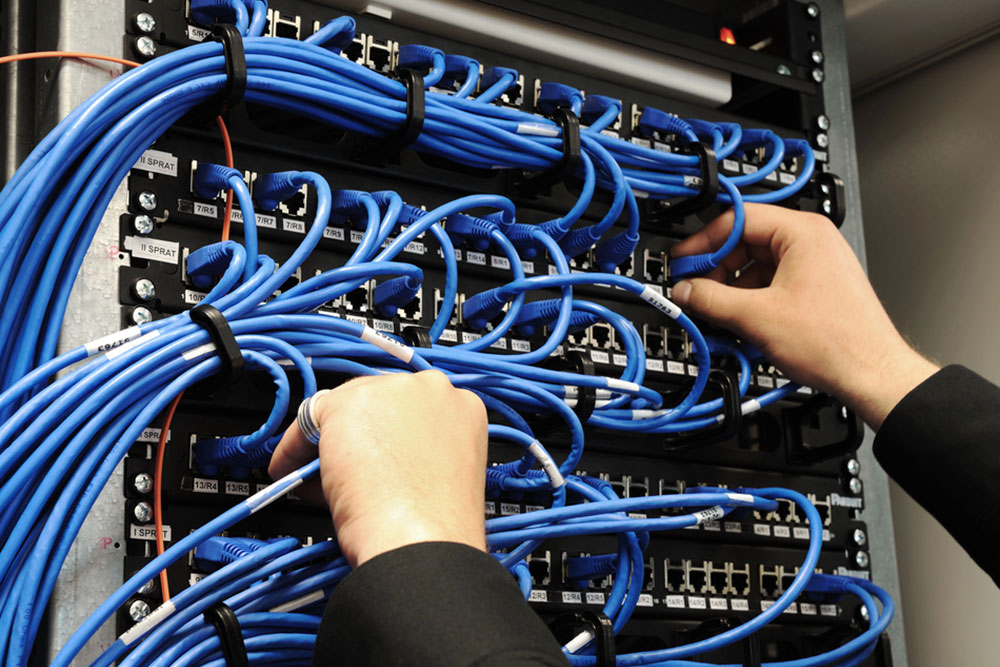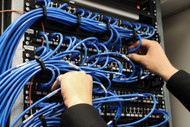Posted by Aventis Systems on Nov 11th 2025

Every business relies on its central technology infrastructure to operate efficiently. Servers handle everything from file storage and application hosting to managing communications.
When these systems falter, your entire operation grinds to a halt. Little wonder IT managers and business owners alike are constantly concerned about server lifespan.
The decision to replace or upgrade a server involves balancing immediate costs against long-term operational risk. Nobody wants to invest in new hardware before it is truly necessary. However, clinging to outdated technology can lead to catastrophic downtime, security failures, and massive hidden costs.
So, how long do servers last? And how often should servers be replaced? At Aventis Systems, Inc., we understand the importance of optimizing your IT infrastructure. In this article, we’ll find out how to tell when it’s time to upgrade or replace your servers and why proper maintenance matters.
Understanding Server Lifespan
Server lifespan refers to the length of time a server continues to perform at optimal levels before it requires replacement or significant upgrades. Typically, the operational life of a server ranges from three to five years.
This can vary depending on factors like usage, environmental conditions, and technological advancements. The components within a server, such as the hard drive, memory, and server processors, can wear out or become outdated over time. Doubtless, this affects its ability to function at peak performance.
How long a server lasts depends largely on its role and how heavily it is used. A server running intensive applications or managing large volumes of data may need replacing sooner than a server used for basic tasks like file storage.
Signs It’s Time to Replace a Server
Servers, like all technology, show signs of wear and tear as they approach the end of their useful life. Recognizing these signs early can prevent major disruptions and help you plan for replacements before critical failures occur. Here are a few signs that indicate it may be time to replace your server.
Decreased Performance
One of the most noticeable indicators that a server is nearing the end of its useful life is a decline in performance. If your server takes longer to process tasks, experiences more frequent slowdowns, or if applications begin to lag, it could be a sign that the hardware is outdated or struggling to keep up with increasing demands.
Frequent Downtime
If your server experiences frequent crashes, shutdowns, or restarts, it is a clear warning that the hardware is failing. While some issues can be resolved with repairs, recurring downtime often signals deeper, more significant hardware problems that can’t be easily fixed.
Incompatibility with New Software
As software evolves, so do the demands placed on hardware. Older servers may not be able to support newer software versions or operating systems. If your server cannot support the business software or tools you need to stay competitive, it’s time to replace it.
High Maintenance Costs
If maintaining and repairing your server becomes a regular and costly endeavor, it might be more cost-effective to replace it. The expense of ongoing repairs, upgrades, and service calls can exceed the cost of purchasing a new server, especially when considering the downtime and inefficiencies these repairs cause.
Energy Inefficiency
Older servers often consume more energy than modern, more efficient models. This inefficiency can lead to rising operational costs as your server continues to drain power, contributing to higher utility bills. Replacing outdated servers with more energy-efficient models can reduce costs in the long term and support your business’s sustainability goals.
When to Upgrade Instead of Replacing
While server replacement is inevitable after a certain point, upgrading can be a viable option if the hardware is still functional but needs enhancements. Here are a few scenarios where upgrading might make more sense than replacing your server entirely.
Upgrading Hardware
If your server’s performance issues are related to specific components like memory, storage, or processing power, upgrading individual parts can extend the server’s life. For example, adding more RAM or switching to faster hard drives can improve speed and efficiency without the need for a full replacement. This can be a cost-effective way to get more years of service from an aging server.
Virtualization Upgrades
If your business is expanding and your server is nearing capacity, upgrading to a virtualized server environment may be an effective solution.
Virtualization allows you to run multiple virtual servers on a single physical machine, improving resource utilization and allowing your current server to handle more workloads. This can be a less expensive alternative to replacing an entire server.
Software and Firmware Upgrades
Sometimes, an upgrade to the server’s software or firmware can provide the necessary improvements in performance, security, and efficiency. If your hardware is still in good condition, updating the operating system or installing the latest firmware can address compatibility issues. This can improve system functionality without requiring full hardware replacement.
How Often Should Servers Be Replaced?
The general recommendation is to replace servers every 3 to 5 years, but this can vary based on several factors, including the server’s role and workload. Businesses that rely heavily on their servers and experience high traffic or large-scale data processing might need to replace their systems more frequently. On the other hand, businesses with more moderate usage might extend their server’s lifespan to 6 years or more.
As technology continues to evolve, newer servers may offer significantly better performance, efficiency, and security than older models. So, replacing servers periodically is an important part of staying competitive and ensuring your IT infrastructure is up-to-date.
Protect Your Business with Timely Server Replacements
When considering whether to replace or upgrade your server, it’s important to weigh the costs, performance needs, and the long-term implications for your business. If your server shows signs of failure, high maintenance costs, or struggles with modern software, it’s time to consider a replacement. On the other hand, if your server is still functional but needs a performance boost, an upgrade can extend its life without the cost of a full replacement.
Aventis Systems, Inc. offers a wide range of server products in our product catalog to meet the needs of businesses at all stages. If you're unsure when to replace or upgrade your server, call an IT pro now. Our team can help you assess your current IT infrastructure and guide you through the process of upgrading or replacing your servers.

